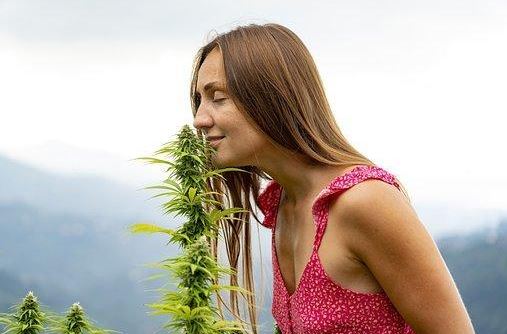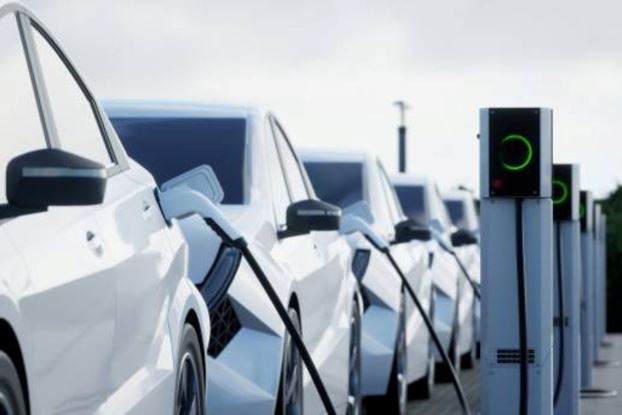Vaporization Vs. Edibles: Which Cannabis Consumption Method Is Best For You?
One great thing to love about cannabis, besides its diverse medicinal properties, is that the herb can be made into different formulations. Users get to pick a preparation that aligns with their preferred delivery method and intended effects.
This article will compare two popular ways to consume cannabis – edibles and vaporization – to help you hunker down on the best delivery system for you.
Introducing Cannabis Vaporization
Cannabis vaporization entails heating marijuana in a vaporizer and then inhaling the heated vapor. The practice is widely touted as a safer alternative to smoking weed.
One way to optimize your cannabis vaping experience is to invest in a high-performance vape device, such as Venty.
Venty is a fast-heating vaporizer designed to consume dry herbs. It’s the first vape device to feature adjustable airflow, which (along with temperature control) allows you to tailor the experience to your vaping level.
Even better, there are several vape stores to explore if you’re looking for a discounted one. A little research is all it takes to find a reputable store that stocks high-quality vape attachments.
About Cannabis Edibles
Cannabis edibles are consumable marijuana formulations. Edibles come in many shapes and sizes. Some are raw and unrefined, whereas others are highly processed.
Unlike cannabis vaporization, which traces its origin to the early 1990s, edibles have been around much longer.
The earliest references to cannabis-infused foods date as far back as 2000 BC. Weed edibles were popularly consumed in ancient India, particularly in the Hindu Kush region.
One of the earliest cannabis edibles was a drink known as “bhang.” The beverage was made by grinding the leaves and flowers of female cannabis plants. The resultant powder was then made into a paste, after which milk and spices were added.
Cannabis Vaporization versus Edibles – Differences
1. Composition
All marijuana products, including edible and vape goods, contain cannabis derivatives as the principal active ingredients. Those derivatives occur primarily as cannabinoids or terpenoids.
Cannabinoids are responsible for weed’s therapeutic properties, although some are also associated with the famous ‘high.’ While cannabinoids number in the hundreds, the most popular ones are the non-psychoactive cannabidiol (CBD) and the highly psychoactive tetrahydrocannabinol (THC).
Terpenoids give cannabis extracts their distinctive flavors. Common ones include myrcene, limonene, pinene, linalool, and caryophyllene.
Besides cannabinoids and terpenoids, different cannabis formulations may contain additional ingredients.
For instance, cannabis e-juices typically feature vegetable glycerin (VG) and propylene glycol (PG). VG optimizes vapor production, while PG enhances flavor intensity.
As for edibles, additional ingredients may range from caffeine (for cannabis teas) to cocoa beans (for weed chocolates), gelatin (for gummies), etc.
2. Occurrence
Marijuana vape oils exist in three primary forms – e-juices, concentrates, and dry herbs.
Cannabis e-juices are liquid-based products containing CBD or THC and other secondary ingredients like VG and PG. Weed concentrates are products formulated with high THC content (typically over 40%), while dry herbs are dried cannabis buds.
Cannabis edibles also occur in different forms. Popular options include beverage drinks, gummies, candies, chocolates, and oils.
3. Delivery Method
Cannabis vaping involves inhaling heated cannabis vapor through a vaporizer. There are two primary vaping techniques to explore – mouth-to-lung (MTL) and direct-to-lung (DTL).
In MTL vaping, you draw heated marijuana vapor from a vaporizer and hold it momentarily in your mouth before swallowing. Conversely, DTL vaping is when you inhale vapor directly into your lungs.
Cannabis edibles are administered pretty much like regular consumables – by ingestion.
The actual method depends on the specific edibles in question. For instance, cannabis tea is meant for drinking, whereas gummies are designed to be chewed.
4. Onset Time and Longevity of Effects
Vaping marijuana delivers near-instant effects. This delivery method can kick in within five minutes of inhaling the first draw. Comparatively, edibles may take thirty minutes to three hours to kick in.
The variance is due to how each delivery method gets weed to your system.
When you vape cannabis, the cannabinoids and terpenes in the product enter your bloodstream faster through the mucous membranes in the lungs. That’s in contrast to edibles, which must first be metabolized in the liver before they’re ready for absorption.
However, edibles deliver longer-lasting benefits than vape products. While the effects of vaping may wear off within three hours, weed edibles can linger in your system for up to three days.
5. Legality
As cannabis edibles and vape oils contain marijuana, it’s intuitive to imagine that both products are subjected to similar regulations. But that’s not always the case.
In localities where cannabis is banned in its entirety, vaping weed and consuming marijuana edibles are outright illegal.
However, the scenario changes where cannabis is allowed, but vape products are prohibited. In such jurisdictions, it may be illegal to possess and distribute cannabis vape oils.
The trick is to stay informed on local cannabis and vaping laws. Illegal possession of either product may result in heavy penalties, a jail term, or both.
Wrap Up
Both cannabis edibles and vape oils boast marijuana’s healing properties. Choosing either formulation depends on your desired effects. While vaping has a faster onset time, edibles deliver long-lasting benefits.
But whichever delivery method you prefer, proceed cautiously to minimize the risks of unpleasant effects.
Overdosing on marijuana may cause hallucinations, dry mouth, bloodshot eyes, and nausea, among other undesirable symptoms. In the case of excessive vaping, you could also experience throat irritation and lung disease.


